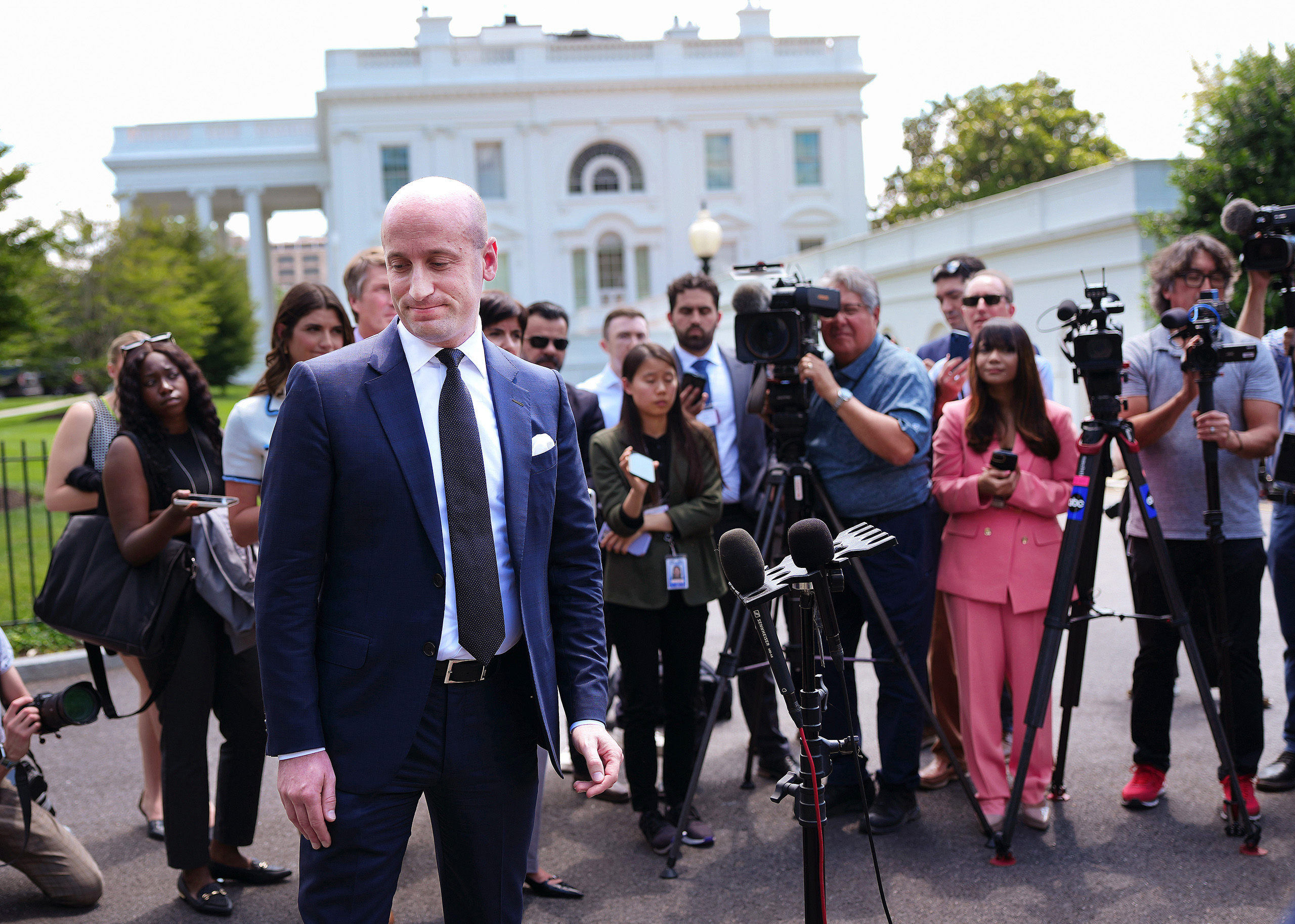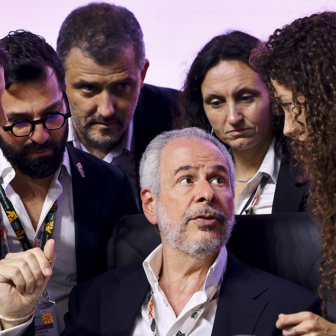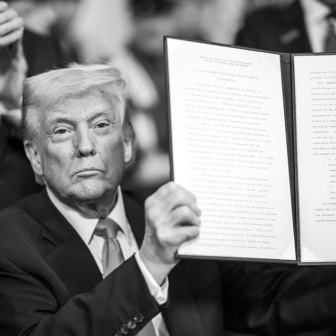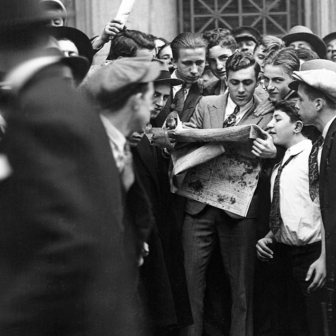The Atlantic’s Adam Serwer calls it “a comprehensive attack on knowledge itself, a war against culture, history, and science.” Donald Trump’s administration seems intent on dismantling the educational and research systems that have made the United States a world leader in these fields, a place where students, academics and researchers have wanted to be.
His administration sees colleges and universities — particularly Harvard University and other Ivy League institutions — as hostile to conservatives, biased towards minorities, hotbeds of antisemitism, and intent on perpetuating liberal or “woke” ideologies. Trump is also attempting to impose his approach on overseas institutions that receive US research funds, including those in Australia.
Universities like Harvard are not without their faults, of course. Merit and racial diversity are endangered by admissions systems that favour the children of graduates to encourage alumni ties and, importantly, donations. But it’s also true that “legacy” admissions have declined dramatically at Harvard, from around 33 per cent in the years 2014–22 (compared to an overall acceptance rate of around 6 per cent) to 16 per cent in 2025 (when the acceptance rate was a little over 3 per cent).
These institutions are also very rich, with endowments exceeding the gross domestic product of many countries. Harvard tops the list with an astounding US$53 billion in reserves. There are restrictions on how much of this can be spent, however, with donor terms directing 70 per cent of the annual distribution of funds. In fiscal year 2024, Harvard spent US$749 million on financial aid for students and 55 per cent of its undergraduates currently receive financial assistance.
But Trump has said nothing about the inequities of legacy admissions, and nor has he pushed universities to offer more financial aid to students: his vindictive gripes lie elsewhere. Central is his claim that American universities are rife with antisemitism and support for the Palestinian militant group Hamas.
In early March, responding to the findings of the administration’s Joint Task Force to Combat Anti-Semitism, the Department of Education threatened sixty institutions of higher education with potential enforcement actions if they do not fulfill their legislative obligation to protect Jewish students on campus.
The administration also expanded into higher education its attack on Diversity, Equity and Inclusion, or DEI, initiatives. In February the Department of Education issued a letter warning institutions to stop using “race-based preferences” in admissions, financial aid, hiring, training and other areas or risk losing federal funding. (These demands extend to Australian universities and research institutes that receive US research funds.) The department has launched investigations into fifty-two universities in forty-one states, accusing them of using “racial preferences and stereotypes in education programs and activities.” As part of its aggressive targeting of colleges and universities for allegedly flouting the president’s priorities, the department is also probing universities that allow transgender athletes to compete in women’s sports.
Trump has also taken aim at university endowments — which give universities a measure of insulation from his demands — by signing executive orders to enforce disclosure of large donations and foreign gifts. Other measures introduced by executive order would reshape the college accreditation system in line with the administration’s political priorities. Washington insiders report that the administration is planning to further up the ante by examining where endowments are invested — scrutinising them for ties to China, support for green energy and the application of environmental, social and governance criteria the White House doesn’t support.
On top of this, Trump’s One Big Beautiful Bill (yes, that’s what it’s actually called), passed by the Republican controlled House of Representatives and now in the Senate, raises taxes on university endowments. The tax rate, graduated according to the size of a university’s endowment relative to American enrolments (foreign students don’t count), would increase from the current flat rate of 1.4 per cent to a maximum of 21 per cent.
Add to that the impact on students, staff and academic visitors of antagonistic immigration policies, including the State Department’s recent announcement that it would stop interviewing applicants for student visas and “aggressively revoke” visas for Chinese students, and American universities and colleges clearly face a tough future.
Given the long history of attacks by Trump and his vice-president J.D. Vance on institutions of higher education, these hostile measures should be no surprise. In 2022, just weeks after announcing his third presidential bid, Trump announced a “free speech policy initiative” that would strip federal research dollars and student loan support from universities involved in “censorship activities or election interferences.”
Vance, a Yale graduate, now talks about his “totalitarian” alma mater’s “liberal bias.” In a 2021 speech entitled “The Universities are the Enemy” he declared that “we have to honestly and aggressively attack the universities in this country.” In 2024 he told CBS News that the United States “could learn from” decisions made by authoritarian Hungarian prime minister Viktor Orbán, including his controversial crackdowns on dissidents at universities.
In a speech to Yale University in April, Californian Democratic congressman Ro Khanna argued that Trump and Vance fear universities because they pose a threat to their consolidation of power in the executive branch. “Vance calls the university the enemy because he knows what lives here: historians, economists, law professors and scientists who threaten him not with force, but with ideas,” Khanna said.
Despite the early signals, universities and colleges have been shocked by the administration’s efforts to limit academic freedoms, the advancement and dissemination of knowledge and the ability of these institutions to support and protect students and staff from discrimination, inequities and, most recently, arrest and deportation.
Trump’s vengeance — for that is what it surely is — has been directed primarily at Columbia University (perhaps because his businesses have been engaged in a real estate battle with the university) and Harvard, the nation’s oldest university, both of which Trump and MAGA see as overrun with elites and liberals.
In contrast to the major law firms, media and IT companies and other institutions that have chosen to do deals with Trump, Harvard is taking a stand against what university president Alan Garber calls “assertions of power, unmoored from the law.” “The university will not surrender its independence or its constitutional rights,” Garber wrote. This has so far meant the loss of $2.2 billion in funding from the National Institutes of Health and $2.7 million worth of Department of Homeland Security research grants, and threats that the university will lose its ability to enrol international students unless it turns over records on visa-holders’ “illegal and violent activities.” Federal agencies have been instructed to cancel remaining contracts with the university.
“Everyone knows that Harvard has lost its way,” Trump has posted on social media. “Harvard is a JOKE, teaches Hate and Stupidity, and should no longer receive Federal Funds.” As always, he is fixated on making an example of those who push back against him. Trump says the “last thing I want to do is hurt them [Harvard]” but he maintains he has no choice, and Harvard is fighting back. “So Harvard has to behave themselves. Harvard is treating our country with great disrespect. And all they’re doing is getting in deeper and deeper and deeper. They’ve got to behave themselves,” he reiterated.
The attacks have continued. Trump has threatened Harvard’s tax-exempt status and, most recently, his administration has ordered it to stop enrolling international students. Although a federal judge has temporarily blocked the revocation of the university’s ability to enrol or keep its international students, the issue is far from resolved. Australian students and academics are among those in limbo.
Trump and his administration seem determined to undermine Harvard’s financial health and global influence regardless of the cost to the nation’s prestige and economy, to specialised knowledge and learning, and to innovation. They are using Harvard as an example to scare other institutions into compliance.
Despite concerns about the rebellious ideas and political ideologies they might generate, institutions of higher education have occupied a special place in America from the nation’s beginning. Founding fathers Thomas Jefferson, John Adams and George Washington all saw education as a means of supporting the principles of liberty and republicanism. But the Federalists worried about colleges and universities being overcome with “seditious” ideas from the French revolution, while students aligned with Jefferson and his fellow Republicans claimed that Federalist educators were attempting to impose their own conservative dogmas.
The notorious McCarthy era brought efforts to “eradicate Socialism, Communism, and all forms of Marxism from the schools and colleges of America, and to stimulate sound American education.” A generation later, it was Republican president Richard Nixon who first said, “The professors are the enemy.” Nixon made that remark, later quoted uncritically by Vance, in a 1972 conversation with his national security adviser Henry Kissinger, towards the end of a series of campus disruptions, occupations, riots and police shootings.
But nothing has been as personally vindictive, hard-hitting on multiple fronts and lawless as the Trump attacks. “The way that the Trump administration has gone after Harvard — and higher ed in general — doesn’t really have any precedent in US history that I know about,” said influential economist and Columbia University professor Jeffrey Sachs in a recent interview with the New Republic.
Inevitably these attacks have been compared with crackdowns on universities by twentieth-century figures including Hitler, Stalin, Mussolini and Mao. In a more recent case, the Central European University (founded by George Soros) was forced out of Budapest by the increasingly authoritarian Viktor Orbán, ultimately moving to Vienna in 2018. But despite the lessons from the past, many American universities have leaned toward institutional caution and even retreat on policies like DEI.
In fighting back, the higher education sector is encumbered by two problems. The first is the longstanding and inherent reliance of tertiary education and academic research on government funding. This research is mutually beneficial, of course, with government-funded research producing an enormous variety of scientific, medical, technical and other breakthroughs.
The second is that many Americans are not supportive of higher education. Gallup polling over time shows an increasing proportion of adults say they have “little or no confidence in higher education.” Confidence has dropped particularly among Republicans, who say they are concerned that colleges push political agendas, are not teaching relevant skills and are very expensive. A 2024 Pew Research Center poll found that only a third of Republican voters (and 20 per cent of conservative Republican voters) had a positive view of colleges’ impact.
Some of this can be attributed to a network of right-wing and libertarian think tanks working closely with Republican politicians to manufacture a culture war against educators and academic institutions. (Ironically, many, if not most, of these people are graduates of elite universities.) Forgotten by many is how, after the second world war, universities became engines of social progress, with the GI Bill expanding access to college for millions of returning soldiers.
Increasingly this ill-feeling is also being generated by the White House. “A lot of Americans are wondering why their tax dollars are going to these universities when they are not only indoctrinating our nation’s students, but also allowing such egregious illegal behaviour to occur,” White House press secretary Karoline Leavitt said during a recent briefing.
For Trump, the battle itself is the whole point of this fraught and multifaceted campaign. It plays to the identity politics of his core MAGA constituency of white, non-college-educated, working-class voters. Most recently people in the administration have begun talking about the need for more people in trade schools rather than elite universities. That is merely a partisan talking point — there has been no effort to use the funds cut from Harvard or Columbia to fund vocational colleges. It’s also worth remembering that almost all of the Ivy League schools are in blue (Democratic) states.
In just a few short months Trump has inflicted serious and long-term damage on America’s higher education system. Despite their problems, these universities and research institutions have been an important source of America’s enormous economic prosperity and influence. It’s impossible to know how and where these efforts — what Vance describes as “necessary correctives” required for “basic democratic accountability” — will end. But there is one certainty: there will be long-term national and international ramifications. •




